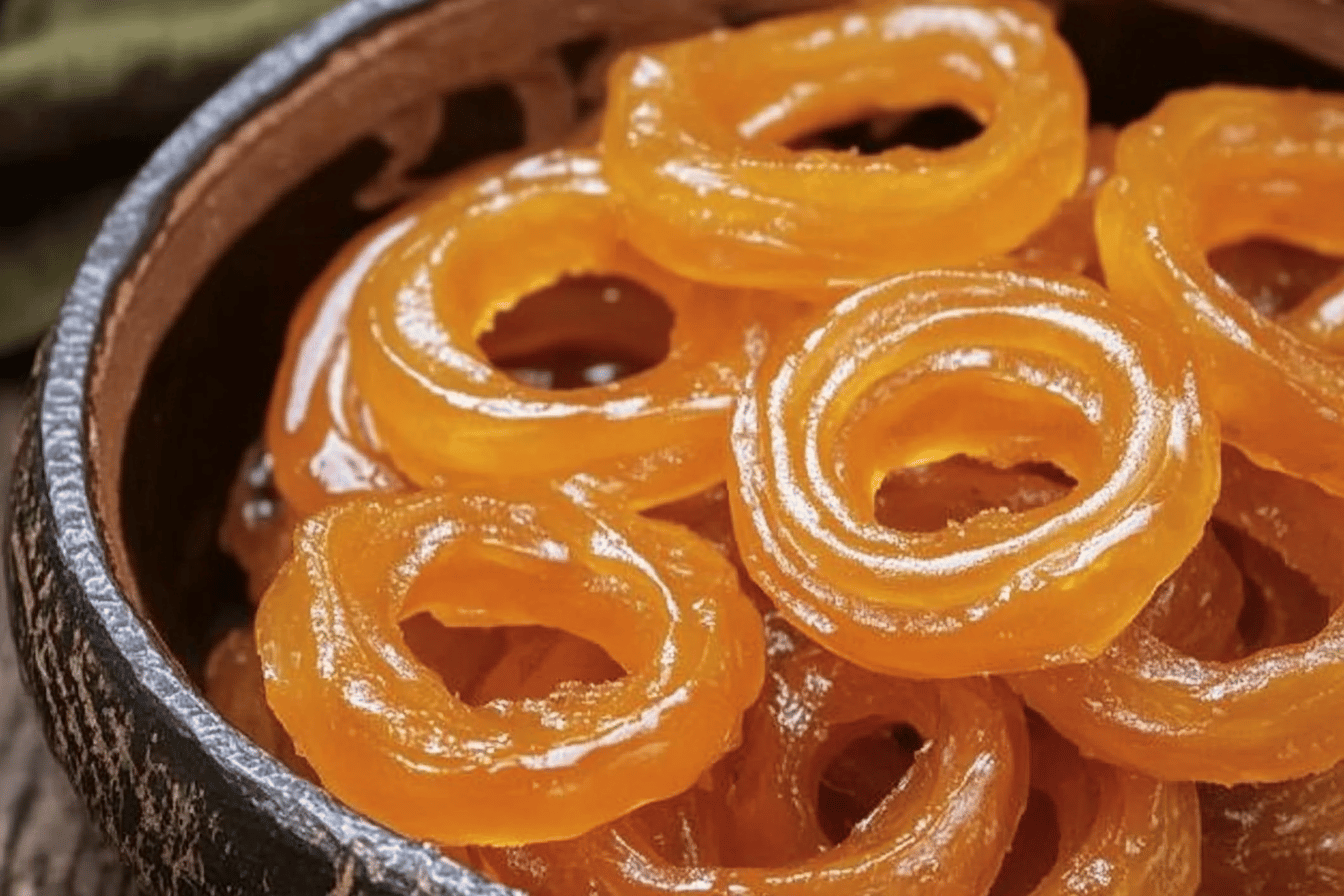Jalebi is a beloved sweet treat that has captured the hearts and taste buds of people across the globe. With its crispy, spiral-shaped form drenched in sweet syrup, jalebi is not just a dessert; it’s a celebration of culture and tradition. Found in various forms in South Asian cuisine, this delectable dish is often prepared during festive occasions, weddings, and family gatherings. The rich history of jalebi, combined with its unique texture and flavor, makes it a timeless classic that’s cherished by many. Preparing jalebi at home may seem daunting, but with the right ingredients and techniques, you can recreate this mouthwatering delicacy in your own kitchen. Get ready to impress your friends and family with your homemade jalebi that’s as good as, if not better than, store-bought versions!
Tools and Equipment
Before diving into the delicious world of jalebi-making, it’s essential to gather all the necessary tools and equipment. Here’s what you’ll need:
- Mixing Bowls: For combining the batter ingredients.
- Whisk or Spoon: To thoroughly mix the batter.
- Muslin Cloth: For piping the jalebi batter into the hot oil.
- Deep Frying Pan: To fry the jalebis evenly.
- Thermometer (optional): To check the oil temperature, ensuring it’s perfect for frying.
- Slotted Spoon: To remove the fried jalebis from the oil.
- Tray: To place the jalebis after frying.
- Pan: For making the sugar syrup.
Ingredients List
Now that you have your tools ready, let’s take a look at the ingredients required for making jalebi:
- 3 cups all-purpose flour
- 0.5 cup corn flour
- 2 cups hung curd
- 1.5 pinches baking soda
- 0.5 cup ghee
- 2 cups sunflower oil
- 3 cups sugar
- 3 cups water
- 5 strands saffron
- 4 drops rose essence
- 0.5 teaspoon green cardamom powder
- 0.5 teaspoon edible food color
All-Purpose Flour: The base ingredient that provides the structure of jalebi.
Corn Flour: Adds crispiness to the jalebi, making it more enjoyable to eat.
Hung Curd: This ingredient adds moisture and a slight tang, balancing the sweetness.
Baking Soda: Helps in the leavening process, giving the jalebi its characteristic texture.
Ghee: Adds richness and enhances the flavor of the jalebi.
Sunflower Oil: Used for deep frying the jalebis. It has a neutral taste that won’t overpower other flavors.
Sugar: The main sweetener for the syrup that coats the jalebi.
Water: Used to dissolve the sugar for the syrup.
Saffron: Adds a beautiful color and an aromatic flavor to the syrup.
Rose Essence: A few drops enhance the overall aroma of the dish.
Green Cardamom Powder: Introduces a warm spice note that complements the sweetness.
Edible Food Color: Used to give jalebi its vibrant color, making it visually appealing.
Preparation Steps
Now that we have everything ready, let’s get started with the preparation of jalebi. Follow these steps carefully:
- In a large mixing bowl, combine the all-purpose flour, corn flour, and baking soda. Mix well to ensure even distribution.
- Add the ghee and edible food color to the dry mixture. Stir until the mixture resembles coarse crumbs.
- Gradually add hung curd and water to the mixture. Mix well until you achieve a thick batter with a slightly flowing consistency. It should not be too runny.
- Cover the bowl with a kitchen towel and let it sit aside for 8-10 hours to ferment. This step is crucial for developing the flavors and texture.
Step-by-Step Cooking Instructions
Once the batter is fermented, it’s time to cook up some delicious jalebi. Follow these detailed instructions:
- Prepare the sugar syrup by heating 3 cups of water in a pan over medium flame. Add 3 cups of sugar and stir until fully dissolved.
- Allow the syrup to simmer until it achieves a one-string consistency. This means that when you take a drop between your fingers, it forms a single thread.
- Add the saffron, green cardamom powder, and rose essence to the syrup and stir well. This will infuse the syrup with wonderful flavors.
- In a separate deep frying pan, heat 2 cups of sunflower oil over medium flame. Ensure the oil is hot enough for frying; you can test it by dropping a small amount of batter into the oil; it should sizzle and rise to the surface.
- Pour the fermented batter into a muslin cloth, tying it securely, and pierce a small hole at one end. This will allow you to pipe the batter into the hot oil.
- Carefully squeeze the batter into the hot oil in concentric circles, forming spiral shapes. Fry until they are golden brown and crispy on both sides.
- Once fried, use a slotted spoon to remove the jalebis from the oil and immediately immerse them in the warm sugar syrup. Soak for about 3-4 minutes but do not over-soak, or they will lose their crispiness.
- After soaking, place the jalebis on a tray lined with butter paper. They can be served hot, warm, or even at room temperature and are best enjoyed with Rabri or on their own.
Nutritional Information and Health Benefits
Jalebi is not only a delightful treat but can also offer some nutritional benefits when consumed in moderation. Here’s a quick overview:
Jalebi is primarily composed of carbohydrates due to its sugar and flour content, providing a quick energy boost. The use of hung curd adds some protein to the recipe, and incorporating ghee can provide healthy fats. Additionally, spices like cardamom and saffron contribute antioxidants and may have anti-inflammatory properties. However, due to its high sugar content, it is advisable to enjoy jalebi occasionally rather than as a regular part of your diet.
Common Mistakes and Tips to Perfect the Recipe
To ensure your homemade jalebi turns out perfect, here are some common mistakes to avoid and tips to enhance your cooking experience:
- Not Fermenting Long Enough: Ensure to ferment the batter for the full 8-10 hours for the best texture.
- Oil Temperature: Frying at too high a temperature can cause the jalebis to burn on the outside while remaining raw inside. Maintain a medium flame.
- Inconsistent Batter: Make sure the batter is neither too thick nor too runny; it should flow smoothly from the muslin cloth.
- Over-soaking in Syrup: To maintain crispiness, do not soak the jalebis in syrup for too long.
- Use of Fresh Ingredients: Using fresh saffron and good quality ghee can significantly enhance the flavor.
Storage, Serving, and Reheating Tips
Jalebi can be enjoyed fresh, but if you have leftovers, here’s how to store and serve them:
- Storage: Store jalebi in an airtight container at room temperature for up to 2 days. For longer storage, refrigerate, but note that they may lose their crispiness.
- Serving: Jalebi is best served warm or at room temperature. Pair it with Rabri (a creamy milk dessert) or enjoy it with a cup of tea.
- Reheating: If refrigerated, warm jalebi in an oven or microwave before serving to bring back some of its original texture.
FAQs and Recipe Variations
Can I make jalebi without food color? Yes, you can skip the food color for a more natural look, but the vibrant color adds to its visual appeal.
What can I use instead of ghee? You can use vegetable oil for a lighter alternative, but ghee adds a unique richness to the flavor.
Are there any variations of jalebi? Yes! Some popular variations include:
- Imarti: A lentil-based version that has a different texture and flavor.
- Stuffed Jalebi: Filled with cream or rabri for an indulgent twist.
- Mini Jalebi: Smaller versions that are perfect for snacking.
Conclusion
Making jalebi at home is not just about creating a delicious dessert; it’s an experience that brings the essence of tradition into your kitchen. The joy of watching the batter transform into crispy, golden spirals and then soaking them in sweet syrup is truly rewarding. With this comprehensive guide, you’re now equipped to whip up your very own batch of jalebi that will surely impress your guests. So gather your ingredients, roll up your sleeves, and embark on this sweet adventure. Remember, the secret to perfect jalebi lies in patience and practice – enjoy the process and savor every bite!

